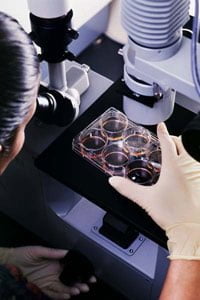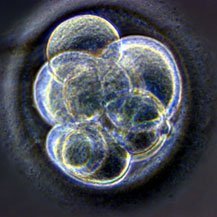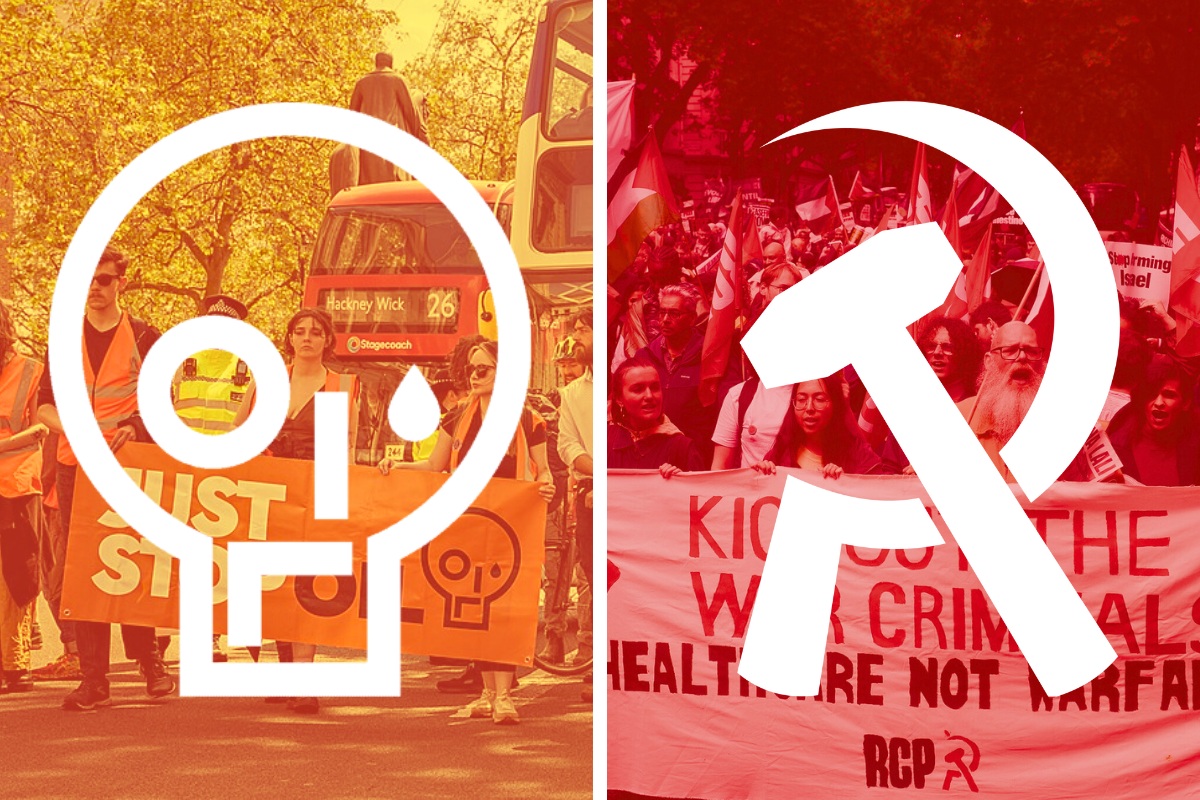Have you ever read a news story about a child battling
against leukaemia who has been searching for a bone marrow donor and a match
that would save his or her young life? Later, you read an update; yes, a donor
has been found, the transplant of bone marrow worked and both donor and patient
are doing well. Do you not feel joy in your heart? Are you not delighted for
all concerned? You might be surprised to learn that bone marrow transplant is
stem cell replacement.

Today it is common to hear about childless couples
undergoing successful IVF treatment, allowing them to have children who would
not otherwise have been born. IVF is stem cell treatment too. Examples of
medical science making the impossible possible.
IVF (In Vitro Fertilisation) involves the total
manipulation of the entire fertilisation process, taking place as it does in a
laboratory, outside the natural environment. Cells from the sperm of a male are
taken and injected into eggs extracted from the womb of a female. The
fertilised cells are grown and coaxed before being put back inside the womb to
develop. Is this practice "evil"? Is it "immoral" for
couples to seek this treatment? Is the conduct of scientists, nurses and
doctors who all participate and facilitate these proceedings
"unethical"?
A stem cell is an unspecified cell that can evolve into
the different cells necessary for a human being. The term "stem cell
research" was until recent years to be found only in obscure scientific
and medical journals, but since the phenomenon of Dolly the sheep less than a
decade ago most people have heard the phrase. Dolly was created by Professor
Ian Wilmut and scientists at the Rosslyn Institute in Scotland and the news
made headlines around the world. Wilmut removed a mammary gland from a Dorset
Finn sheep and isolated the nucleus of the cell. The nucleus of a living cell
contains all the information, data and instructions that make up the DNA of a
living thing. The nucleus was then inserted into an egg that had no nucleus
taken from a Black-faced Scottish ewe. By carefully controlling the fertilised
cell and using the female sheep as a carrier of the fertilised cell, Wilmut
created Dolly – an exact copy of the Dorset Finn sheep. It was an identical
biologically exact reproduction of the Dorset Finn sheep – a clone. Dolly was
the culmination of many years of research and the product of hundreds of
attempts. It was achieved on a shoestring budget and has generated much debate
and controversy. Now that cloning can be done successfully people are concerned
about risks and possible abuses.
Challenges and scientific discoveries
In the course of human history new discoveries and
detections, particularly in the fields of science and medicine, have challenged
established thought and pushed at the boundaries of perception. The human race
has had to re-evaluate fixed ideas and positions many times in response to the
questions thrown up. Sometimes we are forced, kicking and screaming, to abandon
old comfortable ways when confronted with rational thought and truth.
Human beings are very conservative by nature. Change is
resisted especially when a certain way of doing things is traditional and seems
to work well. New information collides with the way we have been taught to
think for generations. We face such a prospect at the present time and stand at
a critical point in history.

The ongoing research into stem cell therapies as a
treatment or possibly even a cure for diseases that have blighted us for all
our existence and baffled doctors and scientists means that we find ourselves,
as a society, in a period of unparalleled medical, scientific, social and moral
challenges. We are on the verge of eliminating motor neurone disease,
Parkinson’s disease, Alzheimer’s syndrome, cystic fibrosis, muscular dystrophy,
multiple sclerosis, congenital heart disease, hereditary illness, diabetes,
rheumatoid arthritis and lots of other medical conditions. The extirpation of
these catastrophic diseases through stem cell research should be a cause for
celebration.
Instead there is widespread opposition among some circles
throughout the world. Ignorance of scientific descriptions and words is a
contributory factor, with many unable to differentiate between a cell, a
neurone, a nucleus, an embryo, a clone and a foetus. The lack of information
among the masses is being skilfully employed by the opponents of research who
are responsible for a vacuum which highlights the need for public information
on this subject as a matter of urgency. More importantly a smokescreen has been
introduced by the Roman Catholic Church and the organised right wing neo-cons
who form the Evangelical Christian movement in the United States.
Stem cell research is in its infancy. Yet reading the
statements, looking at the websites and listening to the religious leaders of
the powerful Churches, you could be forgiven for arriving at the conclusion
that stem cell research has yielded very little to be optimistic about! What
the opposing campaigners don’t make public is that their aggressive lobbying
and highly organised campaigns against further stem cell research has resulted
in a block being placed for a number of years on many areas of the entire
research projects. Having successfully halted much of the work, these
propagandists then use the argument that stem cell research has not fulfilled
the promise scientists said it would.
This jaw dropping hypocrisy shows how the ‘anti’ camp are
using any means necessary to thwart further research. The understanding of the
cell network and how individual cells work was the result of The Human
Genome project, a massive, comprehensive, scientific work completed in the
late 1990s which has never been equalled. The Genome confirmed what most
scientists already believed; we humans evolved over many millions of years
sharing the material composition and genes of many of earth’s creatures,
including mice and even the humble fruit-fly. We are less than 2% genetically
different from monkeys and, far from being exclusively created; we have made a
fantastic journey through time to evolve into the animal we are today. Like Darwin’s
Origin of the Species in 1859, the Genome confirmed many things we already
knew. It filled in serious gaps, but its most sensational contribution was the
understanding of the cell structure and, more importantly, how to isolate
certain parts.
All the evidence suggests stem cell therapy is the
key to secrets that will enable us to conquer many health problems that were
beyond us. For decades the scientific community has known about the potential
in stem cell therapy. One of the main obstacles to progress has been lack of
money. Previously all research was carried out by private companies –
businesses if you like – and individual research scientists. These
organisations, many of whom are answerable to directors and shareholders, were
understandably reluctant to fund research without guarantees. And businesses
must be aware that rivals might capitalise on their hard work. These
difficulties will ease slightly, now that the government has agreed to fund
scientists who will be licensed and work under strict supervision. Medical
scientists are overwhelmingly enthusiastic at the concrete promise of the
greatest development ever in the treatment of disease. With some financial
restraints lifted, events will move at a faster pace than before.
What are stem cells? Are they human beings?
Stem cells are unspecified cells that have the ability to
divide, multiply, mutate, replace themselves and grow into the different types
of cells needed to become a human being. Some of these cells become
specialised, for example becoming exclusively blood cells, or cells dealing
with the heart, brain or muscles. Cells contain our genetic information and
have different functions. Once the cell becomes specialised it is very
difficult to alter its behaviour. An eye cell cannot be changed into a bone
cell and so on. Human cells come from 2 main sources: An inner layer of cells
from a fertilised mammalian egg known as a blastocyst and the cells from
certain tissues from adults. One of the main misconceptions people have is that
a fertilised mammalian egg is a human being. In fact, throughout the world,
millions of fertilised mammalian eggs are stored in IVF clinics – no longer
required because the recipient and donor might have completed their family.
These cells are ideal for use in stem cell replacement therapy. Thousands of
them are destroyed every day, unsuitable for one reason or another. Umbilical
cords of newborn babies which are discarded after birth contain enormous
amounts of material already fertilised that could be extracted and used. If the
surplus mammalian fertilised cells manipulated by scientists are human beings,
then all parents of IVF babies are "evil" in the eyes of the
religious zealots. How can they argue against use of these cells especially
since they are destined for destruction?
However, a strong anti-stem cell lobby exists. This
campaign wields enormous influence and at its head stands the born-again
evangelical Christian neo-right movement in the United States and the Roman
Catholic Church. Those opposed to stem cell research have brought a sinister
darkness into the debate, hinting that a Dr Moreau lurks in the shadows. It would be simple enough to tell Christians
who object that they are free to decline stem cell treatments if they ever need
them – just as Jehovah’s Witnesses today continue to refuse whole blood
transfusions on the grounds that this procedure is against the "word of God"
and therefore "evil". But to argue along these lines would be to give
some credibility to the illogical and baseless argument presented by Church
leaders. For Christians, the single most
important point is one of when actual life begins. In generations past abortion
was a straightforward open and shut case. Once the woman had conceived then it
was against Christian teachings to terminate the pregnancy. The Bible taught it
and it has been consistent Christian theology for hundreds of years. Others
argued a woman should be free to make her own choice. It was, they said,
related to a woman’s right to control her reproductive system and
religio-politics had hijacked a matter that was essentially individual and
private as well as exclusive to women. In their desperation to undermine stem
cell research the Christian right and the Vatican openly link it with abortion
in an attempt to deceive followers into opposing it. The late Pope, John Paul
II publicly criticised the research, calling it "immoral" and
"evil". Yet the Church cannot find any way to argue their position
except by deceit and the spreading of wild inaccuracies presented as fact.
Because the Roman Catholic Church has no formal written
instruction about the exact time a person is ensouled (gets a soul that lives
after the person dies), John Paul II expanded on this so as to clarify the
Church’s ruling on the matter of stem cell research, "This (the moment
when the sperm meets the egg in the womb) is the moment for the biological
beginning of the new life," he said. Here is the rest of John Paul
II’s declaration given on July 23, 2001: "Experience is already showing
how a tragic coarsening of consciences accompanies the assault on innocent
human life in the womb, leading to accommodation and acquiescence in the face
of other related evils such as euthanasia, infanticide (abortion) and most
recently the creation for research purposes, of human embryos, destined to be
destroyed in the process".
This type of "logic" means that the religious
people who oppose this crucial research cannot afford to give anything away.
They find themselves in an existential crisis partly because of what they
decreed in years gone by and partly because religion in the 21st century is
different from its model of the 19th and 20th centuries. Now we see evidence of
regression masquerading as progress. In the more established religions there
has been a shift towards a cafeteria-buffet style of taking a bit of this or
that and ignoring other things. For some, their religion reflects part of their
identity and tradition while providing a network to consolidate and widen
contacts. In a parallel instauration
this generation has witnessed an enormous amount of alternative cults including
contacting "dead" people while new religions have mushroomed. Sects
have sprung from various Christian denominations where speaking in tongues is
prevalent. Worldwide global TV broadcasts feature rallies attracting thousands
as super rich preachers openly offer prayers in return for money. The
authoritarian Christian lobby has an influence in politics beyond its
significance, leading to the neglect of science in favour of faith-based
teaching that denies truth. Creationism and texts promoting the idea that the
earth and mankind are about 10,000 years old are taught to children, and not
just in the USA. Increasingly, the reluctance of the state to build modern
schools has allowed private enterprise to facilitate the new schools. As the
owners, these individuals and groups decide the curriculum and choose the
staff, including teachers. There are instances of evangelicals refusing
admission to children deemed unsuitable. Meanwhile people under pressure in
society seek solutions to complicated personal problems, some desiring cures
for terminal illnesses. In this one area of modern life we see the empty
hopelessness of a large section of the population and their desperate search for
an understanding of the reasons for their malaise.
The religious leaders all denounce birth control. Are we
to seriously believe that the huge reduction in the number of children born
today, as opposed to 2 generations ago is the result of religious adherence to
the stance on birth control? Or are we to deduce that many are quietly
disobeying this Church law? What did
John Paul II’s pronouncement actually mean? First of all he directs part of his
instruction to the long held and sacrosanct belief of Catholics and many others
that to stop life once it has started in the womb is wrong as is euthanasia
(mercy killing) and suicide. Anyone with a rudimentary knowledge of the
teachings of Christian denominations and the Roman Catholic Church knows these
are ancient directives. Where it becomes difficult is to find – never mind
follow – any logic in the connection between abortion, euthanasia and stem cell
research, all described as "evil" by the Pope. Human cells are not
human beings. They are not individuals. As part of a larger group and formation
they have the ability to become part of the complete human being. The religious
leaders dance on a pin here, because they have been caught out of their depth
in various areas of doctrine which they held as fixed while science is making
it impossible for many of these teachings to be sustained. Having taught their
adherents certain things, they cannot backtrack at this stage. It is patently
clear that a cell which can become a variety of cells, and even mutate or destroy
itself, is not a human being. It has no central nervous system, no spine, no
bones, no brain, no organs or no personality. It is a small blob of matter so
tiny that it can only be seen under a powerful microscope. The word embryo is
defined as meaning, "The pre-foetal product of conception from
implantation through to the 8th week of development". A newly fertilised
cell, so minute that one can only see it under a microscope, has not acquired
any individuality. It is nothing more or less than a cell, capable of
developing but only as part of a more complete expansion operating within the
whole. The anti campaigners play on the term "embryonic" because they
know that people will immediately think of a foetus.
Attempt to link stem cells with abortion
Once sperm fertilises an egg cell the result is a zygote
that has the DNA of both parents. Pluripotent or embryonic stem cells are able
to differentiate into all the derivatives of cells. They can develop into
each/any of the 200 plus cell types that form a human body. The actual cell is
incapable of discerning, at this early stage, whether it will be a cell for the
cornea or a cell for the pancreas. When John Paul II made a qualitative leap of
some distance and lumped stem cell research into abortion and suicide issues,
he deliberately muddled words. What should be a rational, honest, fact based
debate is reduced to emotional blackmail of the faithful. The image conjured up
by his choice of descriptive words is of a semi-formed foetus in the womb, like
those seen on anti-abortion posters. This is fundamentally false. We are
talking here about a microscopic cell! Then there is a need to address the
nonsense regarding "the creation for research purposes of human embryos
destined to be destroyed in the process". Language is thrown about
that is not constructive – deliberately used to project a picture of learned
men, the world’s leading scientists, behaving like unsupervised 13 year-old
boys in a biology class, casually and vindictively "destroying" materials
that are difficult to obtain and central to one of life’s most important
projects.
The fact is that nothing would be destroyed in any
research process; cells unsuitable for one procedure would be used for
something else. But statements from the Pope are powerful and John Paul II’s
contribution to this debate can only be seen has negative, based as it is on
falsehoods and formed in ignorance or perhaps bias. In the Roman Catholic
Church the Pope is "infallible" and what he says cannot be refuted. Some will look
at the Pope’s words and say, "This can be interpreted in a different
way". Bishop J.A. Fiorenza, President of the United States Bishop’s
Conference, however, leaves everybody in no doubt, having this to say on the
official Church website, "…morally unacceptable research that relies
on the destruction of some defenceless human beings for the possible benefit of
others". Again the Bishop deliberately makes a statement that is
wrong. We are not dealing with human beings, never mind defenceless human
beings.
This raises an important point about long held Catholic
theology; if the Pope is right and a soul goes into a cell when it has been
fertilised by sperm, what happens if that cell then splits to become twins? Do
twins share a soul? Is another soul put into the other cell that will, after
the process described above occurs? The logic of Church leaders and how they
arrive at conclusions may be difficult to understand. We are instructed that
much of the mysteries requires faith. That it is not our role to question, but
to obey. Yet here we are, in this particular instance dealing with life and
death, with the previously unimaginable opportunity to treat or cure
devastating illnesses. It is now known that when women urinate, they pass
certain proteins that coat cells. If we are to accept the religious argument in
this debate then the everyday bodily function of urinating must be
examined. Where does such pedantry and
rigidity of beliefs by the anti campaigners lead us? The Church has effectively
turned something good into something bad. It is like arguing for the banning of
cameras or video recorders on the grounds that paedophiles might use them to
take photographs of vulnerable children, or banning the making of films in case
anybody produces porn. Past debates concerned the sin being committed by a
woman taking a pill to prevent her conceiving while having sexual relations, or
a tablet that gives men an erection. They were condemned by religious leaders.
One can accept that members of religions can take instruction on these topics,
and understand the perspective of the religionists. After all, they claim the
sex act should be engaged in only to procreate. But stem cell research and the
promise it holds demands a substantial examination of why anybody would oppose
and the unconditional demonstration of a valid reason for claims that their
arguments against have substance and validity. Considering the enormity of this
issue the protagonists of the anti campaign cannot rely on their old demands
for obedience. The stakes here are very high indeed.
IVF was mastered 40 years ago. The Vatican and neo-right
in the politically influential Christian born-again movement and many others
condemned it. Is it "immoral" for childless couples to seek this
treatment? If we take the Church’s directive on stem cell development seriously
and their opposition to "the creation for research purposes of human
embryos destined to be destroyed in the process", then all those whose
life has been enhanced as beneficiaries of IVF stand condemned. They have
knowingly and willingly participated in a practice which involved the creation
for research purposes of human embryos with those surplus to requirements being
destroyed. In the Pope’s words, it is "evil".
According to Roman Catholic law, sin is either formal or material.
A formal sin is committed against God by a person "directly intending to
participate in an evil act or an evil act of another". Therefore it surely
follows that the doctors and scientists have sinned as well. The second type of
sin is material. This concerns a person who did "not intend to commit the
evil act but may be involved in some of its consequences". The Church’s
website gives examples relating to abortion which it persistently links to stem
cell research for the purpose of undermining further research. Every single
scientist and those religious people who support stem cell research assert that
abortion has nothing whatsoever to do with either IVF or stem cell therapy.
Interestingly, purgatory and limbo and that whole cleansing period that used to
be prominent in Church teachings has been off the menu for some years now.
By its own admission the Vatican have "not taken a
philosophical position" on the exact nano-second of ensoulment (the
entering of a soul into the body). Its present day philosophy relies on the
Pope’s deliberation in 2001 mentioned earlier. One would imagine that on such
an important piece of teaching and a cornerstone for all the rest of doctrine,
the Catholic Church would have a definite liturgy and instructive writings.
Until now, it has been a simple take it or leave it issue and nothing was ever
needed in the way of announcements or written instruction. The discovery of how
to isolate cells within other cells was a moment of historical process that
massively undermined religious teachings.
Yet, rather than adapt, the Christian world leaders dug their heels in,
dogmatically refusing to recognise the new findings and move with the times.
The history of the Church and organised religion is littered with examples of
persecution against scientists and philosophers from Galileo to Marx. Rev.
Patrick McCloskey, OFM, spokesman for the Roman Catholic Church makes the case
against stem cell research on the grounds, "A human life is created but
deliberately prevented from reaching its full potential". He seems a
straight talking man but his remarks are misleading, deceptive and completely
wrong in fact. Bearing in mind he lives in America, Fr McCloskey goes on, "America
opposes federal (government) funding because it reflects a fear that such
approval might lead to direct federal funding for abortion [not currently
available in US. KM]" Of course, cells can be taken from aborted foetuses
and here the Catholic Church is on firmer ground. Could it be that Fr McCloskey
inadvertently reveals the reasoning for the Church’s unsustainable
position? If the state funds stem cell
research then it could follow that abortion would need to be provided by the
state, free at the point of need (the majority of women who terminate
pregnancies are from the poorest sections of society), in a safe medical
environment? One’s personal view on
abortion does not matter; the aborted foetus is destroyed anyway. Taking cells
from one will not change its determined destination.
Religious argument needs to be examined
The Roman Catholic Church is the largest of the Christian
Churches in the world. Its social influence and political power is immense.
Hundreds of millions adhere to its doctrines and teachings, taking their lead
from the Church’s elite, especially the Pope. When the Church becomes involved
in laying down the law as in this case, it is paramount that their position is
scrutinised, but this must be done in an exacting way, using rationality and
honesty. Unfortunately these are not the guiding principles being employed by
the leaders here. A magnificent unique opening has presented itself. It is a
modern event in every sense and was the stuff of dreams only a few years ago.
Traditionally, the Church has trembled at discoveries and processes that
potentially put their religious authority under scrutiny. An unparalleled
opportunity has presented itself to the human race but rather than recognise
this, the Church has resorted to type as it has a propensity to do when their
religious teachings and authority are questioned. Their unbending disposition
remains as rigid as ever, leaving yet another doltish blot on its history.
Flexibility is out of the question. To expand their argument and give solid
reasons to oppose this research the Church spokesmen have contrived
"facts" and information on three main fronts:
1) The promise of stem cell research is
"overstated". But due to pressure from the Church and efforts from
other Christian institutions the research in various fields was stopped and set
back years. They use this to claim earlier promise has been
"overstated".
2) A misrepresentation of embryos and freshly fertilised
cells and their contentment that embryonic (or early) stem cells are
part-formed babies, made in a laboratory, "helpless human beings"
that will be "destroyed" (for destroyed read murdered).
3) Their determined resort to use of the abstract on the
question of when a fertilised cell and egg become a new human being and the
lies told to supplement their rulings on this.

Lots of Christian Churches operate in a form of democracy,
debating and consulting before reaching decisions and then moving forward. The
Catholic Church does not do this. It is correct that (at the present time at
least) everybody has the right to worship in any way they choose no matter how
bizarre it might seem to others. However, the rights of those of us who choose
not to believe in religion or in a God must also be protected. What has
happened here is that a predominantly scientific matter affecting social
policies and health issues has become embroiled in the absolutism of
religio-politic morals. It would be appropriate for Roman Catholics to
understand that a large number of other religions, including branches of
Christianity hold the Catholic religion in utter contempt, openly dismissing
their practices, rituals and ceremonies as "evil". Offensive? Undoubtedly. Yet for the purposes
of campaigning against stem cell therapy a huge number of the Christian leaders
have happily united in an attempt to demonise it. It is comforting to know that a large number
of Christians, Jews and Muslims are involved in actively campaigning for
research into replacement cell treatment to be allowed. In Iran, a country
under strict Islamic law and one which is pilloried by the western politicians
and their prostitutes in the press, the scientific community praises Allah for
the discoveries they have made in stem cell research. History shows how the
combination of religion and politics can be unhealthy with all kinds of ideas
pitted against equally baffling theories and stated truths turning into
demagogic religious interpretations of right and wrong as against addressing
social and human problems. Morals and ethics are not exclusive to religious
people although some seem to find this concept hard to grasp. Indeed in my
experience it seems these principles are widely lacking in many people who
claim to be religious. Everyone is agreed that killing another person is wrong
and immoral. The point is, in the scientific research into stem sell therapy
this particular ingredient of "killing defenceless human beings" has
been added maliciously by the right-wing opposition as they attempt to impede
human progress while hoodwinking their followers.
Are we to base social and health policies and restrict the
recent fantastic findings of science on the absurd assumption that a few cells
are a human being? On one anti stem cell research website, religious people are
told, "Don’t read. Just vote". This relates to referenda in states in
America where there is to be a vote on whether government funding should be
made available for research. Stem cell research and the information surrounding
it have been badly corrupted. Obviously, religious leaders would prefer it if
Christians did not read the information. This highlights the urgent need for
public information on this subject. If
stem cell research is interrupted or postponed on the principle that
just-fertilised eggs have human rights like the rest of us it will delay a
brilliant bright new future in history. Will you turn away from that light
because you fear the odd shadow cast by it?
May 2007
See also:
What the human genome means for socialists by Alan Woods (February 2001)
Genomics: life and death economics by Phil Mitchinson (April 2000)





